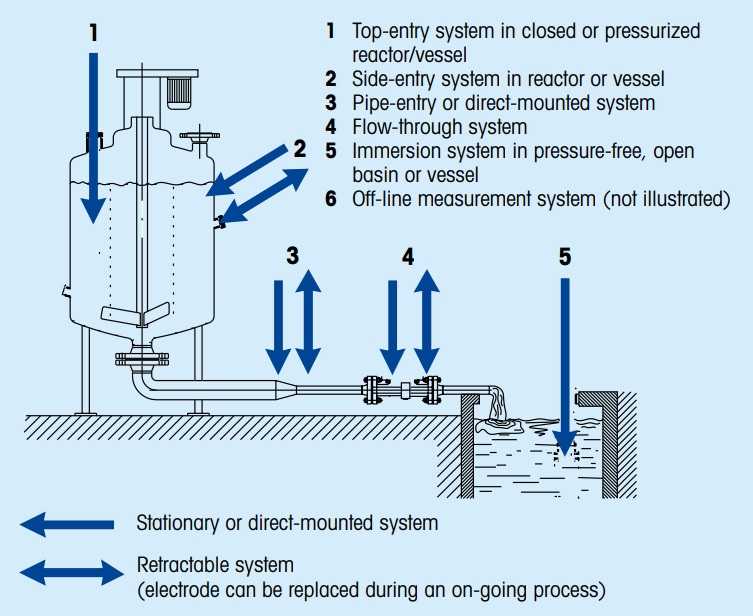| Sign In | Join Free | My frbiz.com |
|
| Sign In | Join Free | My frbiz.com |
|
| Categories | Water Quality Sensor |
|---|---|
| Brand Name: | kacise |
| Model Number: | KFDO310 |
| Certification: | CE |
| Place of Origin: | CHINA |
| MOQ: | 0-100 |
| Price: | $0-$2000 |
| Payment Terms: | L/C, D/A, D/P, T/T, Western Union, MoneyGram |
| Supply Ability: | 100 |
| Delivery Time: | 3-10days |
| Packaging Details: | Common package or custom package |
| Measuring principle: | fluorescence |
| Range: | 0ー20 mg/L (0ー200% saturation, 25 °C) |
| Resolution: | 0.01 mg/l, 0.1 °C |
| Precision: | ± 2% f.s. , ± 0.5 °C |
| Temperature compensation: | Automatic temperature compensation (PT1000) |
| Output mode: | RS-485 bus, Modbus-RTU protocol |
| Company Info. |
| Xi'an Kacise Optronics Co.,Ltd. |
| Verified Supplier |
| View Contact Details |
| Product List |
KFDO310 integrated on-line fluorescence dissolved oxygen sensor is designed and made based on the quenching principle of excited fluorescence of specific substances in physics. The blue light from the light-emitting diode illuminates the fluorescent material on the inner surface of the fluorescent cap. The fluorescent material on the inner surface is excited and emits red light. By detecting the phase difference between the red light and the blue light, and comparing it with the internal calibration value, the concentration of oxygen molecule can be calculated, and the final value can be output by temperature automatic compensation.
| Model number | KFDO310 |
| Measuring principle | fluorescence |
| Range | 0ー20 mg/L (0ー200% saturation, 25 °C) |
| Resolution | 0.01 mg/l, 0.1 °C |
| Precision | ± 2% f.s. , ± 0.5 °C |
| Temperature compensation | Automatic temperature compensation (PT1000) |
| Output mode | RS-485 bus, Modbus-RTU protocol |
| Working conditions | 0ー45 °C, < 0.2 mpa |
| Storage temperature | - 5 ~ 65 °C |
| Installation mode | Immersion mounting |
| Cable length | 5 meters, other length can be customized |
| Power consumption | < 0.05 W |
| Power supply | 12 ~ 24 VDC ± 10% |
| Protection level | IP68 |
| Calibration | Two-point calibration |
| Fluorescent cap life | Guaranteed Use for one year (under normal use) |
| Material for sensor housing | Pom and 316L stainless steel |


The temperature sensing part should be immersed below the liquid surface to avoid collision with the film head surface. The head part of the membrane should be free from sediment.
Tips:
Dissolved Oxygen and Aquatic Life

Dissolved oxygen is important to many forms of aquatic life.
Dissolved oxygen is necessary to many forms of life including fish, invertebrates, bacteria, and plants. These organisms use oxygen in respiration, like organisms on land. Fish and crustaceans obtain oxygen for respiration through their gills, while plant life and phytoplankton require dissolved oxygen for respiration when there is no light for photosynthesis 4. The amount of dissolved oxygen needed varies from creature to creature. Bottom feeders, crabs, oysters and worms need minimal amounts of oxygen (1-6 mg/L), while shallow water fish need higher levels (4-15 mg/L) .
Microbes such as bacteria and fungi also require dissolved oxygen. These organisms use DO to decompose organic material at the bottom of a body of water. Microbial decomposition is an important contributor to nutrient recycling. However, if there is an excess of decaying organic material (from dying algae and other organisms), in a body of water with infrequent or no turnover (also known as stratification), the oxygen at lower water levels will get used up quicker.

|